This school is 1163 years old and still operational.
When we think of the oldest universities, we often picture the United States with Harvard, Europe with famous institutions like Oxford and Cambridge, or Asia with Tsinghua and Peking University. However, the title of the oldest university in the world belongs to Al-Qarawiyyin University – a university located in the Kingdom of Morocco, a country in North Africa.
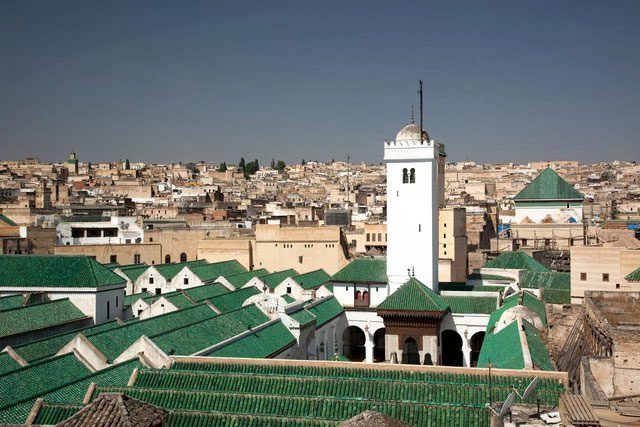
Not Oxford or Harvard, the title of the oldest university in the world belongs to Al-Qarawiyyin University in Morocco.
Founded by the Daughter of a Wealthy Merchant
Over 1200 years ago, Mohammed al-Fihri – a wealthy merchant from Qayrawan (present-day Tunisia), moved with his family to the city of Fes (Morocco). He was among many who migrated to the prosperous cities of Morocco from across North Africa. He had two daughters, Fatima al-Fihri and Mariam al-Fihri. Both received a thorough and excellent education from a young age.
When Mohammed al-Fihri passed away, Fatima al-Fihri and Mariam al-Fihri inherited a vast fortune left by their father. Fatima al-Fihri then decided to dedicate her entire inheritance to establish an educational center and mosque, where the local community could learn and practice traditional Islamic rituals. Not much is known about Fatima al-Fihri, but her story highlights the role of women in the Islamic society of that time. She was not the only woman to establish a university and mosque, but Al-Qarawiyyin University, founded by her, is recognized as the oldest.
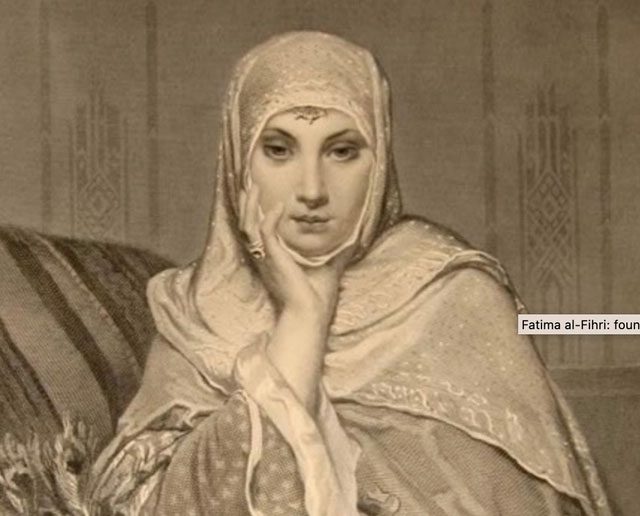
Portrait of Fatima al-Fihri – the woman who founded Al-Qarawiyyin University.
According to the Guinness World Records, Al-Qarawiyyin University, established in 859 AD, is the oldest existing educational institution in the world. It was also the first university to grant degrees to students, and it is recognized as a World Heritage site by UNESCO. Previously, Al-Qarawiyyin served as a leading center of education and spirituality in the Islamic world in the city of Fes, Kingdom of Morocco.
Home to the Oldest Library in the World
Located within the campus of Al-Qarawiyyin University, the Al-Qarawiyyin Ancient Library houses over 4,000 rare and fascinating books of various genres, as well as ancient manuscripts dating back to the 7th century, written by scholars and researchers. Among its treasures is a 9th-century copy of the Quran written in Kufic script on camel skin.
It is known that most of the ancient texts and documents here are preserved in a controlled environment with regulated temperature and humidity, as well as a strict security system. The library also has a research room equipped with the latest technology, including a digital scanning machine to identify tiny holes in the paper, and a humidifier to prevent paper from cracking. Notably, the thick iron door of the library has four intricately engraved locks, each requiring a different key held by four different individuals. Therefore, all four people with their unique keys must be present at the same time to access the library.
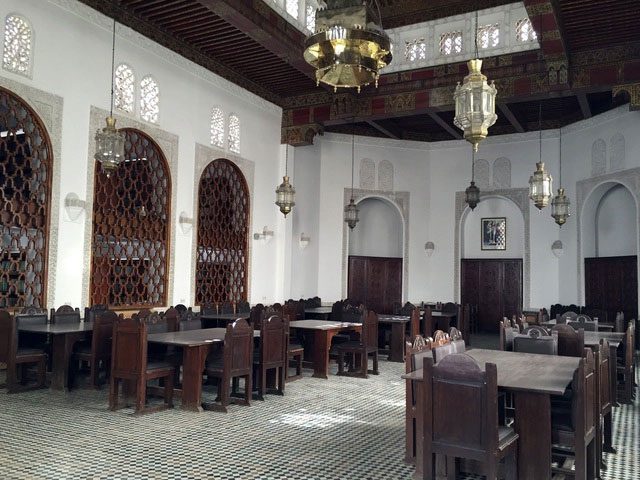
Inside Al-Qarawiyyin Library.
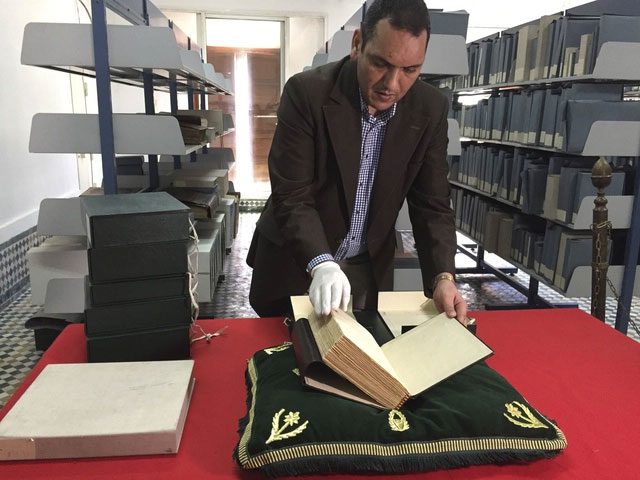
Mr. Abdelfattah Bougchouf – the custodian of Al-Qarawiyyin opening an ancient book in the library.
A Training Ground for Renowned Talents
Throughout its thousand-year history, Al-Qarawiyyin University has produced many famous scholars. They are intellectuals who have had a profound impact on the intellectual history and academic fields of the world, particularly among Muslims. Some notable figures include: Abu Madhab Al-Fasi (famous for the Maliki school of thought), writer Ibn Rushayd al-Sabti, theologian Mohammed Ibn al-Hajj al-Abdari al-Fasi, geographer Muhammad al-Idrisi, and astronomer Nur ad-Din al-Bitruji.
“Gerbert of Aurillac (930-1003), who later became Pope Sylvester II of the Catholic Church, was also a student at Al-Qarawiyyin University. He played a significant role in spreading the use of zero and Arabic numerals in Europe,” according to the Foundation for Science, Technology and Civilization (FSTC) based in the UK.
Other Interesting Facts about Al-Qarawiyyin University
Initially, Al-Qarawiyyin University was merely a place for Muslims in the city of Fes to practice their faith and expand their knowledge of spiritual matters. However, it gradually gained fame. The Muslim community, stretching from Spain to India, began to seek out this school for education. Following the guidance of the Quran, Al-Qarawiyyin expanded its curriculum to include Arabic grammar, calligraphy, mathematics, music, chemistry, law, mysticism, medicine, astronomy, history, geography, and rhetoric…
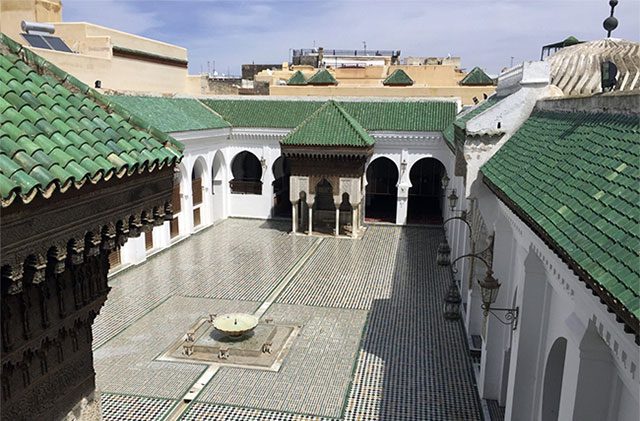
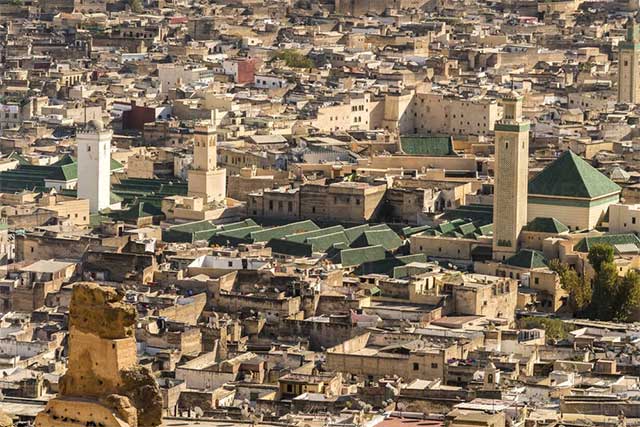
Al-Qarawiyyin University stands out with its green-tiled roof.
With its reputation, Al-Qarawiyyin University attracted the interest of many kings and wealthy merchants, who hoped to provide their children with the best education. They became patrons of Al-Qarawiyyin with generous grants, gifts, especially books and manuscripts – which were quite rare in the 9th century.
The number of applications to Al-Qarawiyyin University is substantial. Thus, the school council had to establish a rigorous selection process. Many strict admission requirements are still in place today. For instance, candidates must memorize the entire Quran to be eligible for admission.
In 1963, Al-Qarawiyyin officially became a public university under the management of the Moroccan Ministry of Education. Today, it has developed into one of the leading universities for natural sciences, attracting tens of thousands of students each year.
Here are a few more images of Al-Qarawiyyin University:
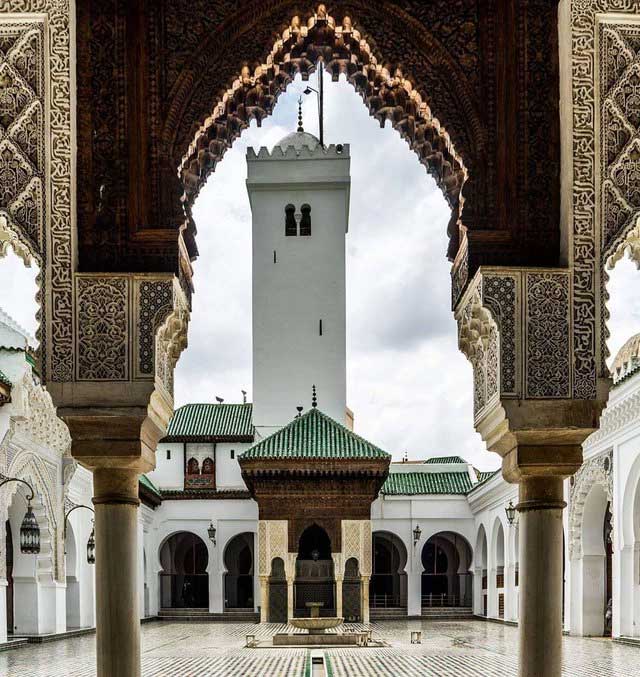
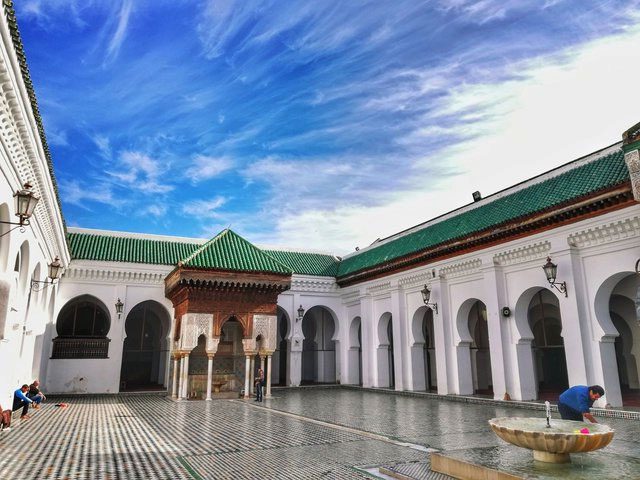
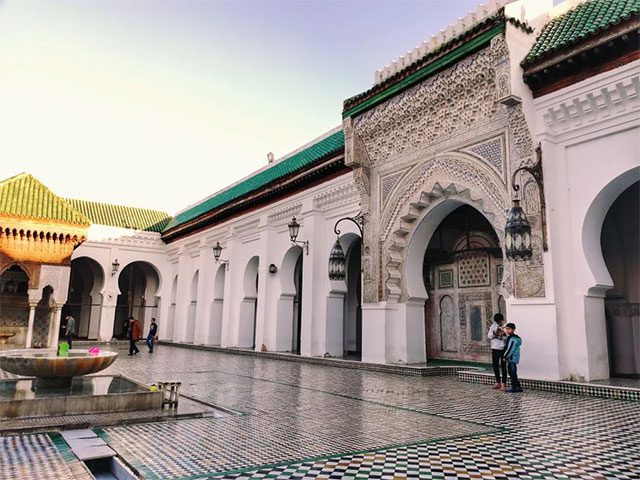
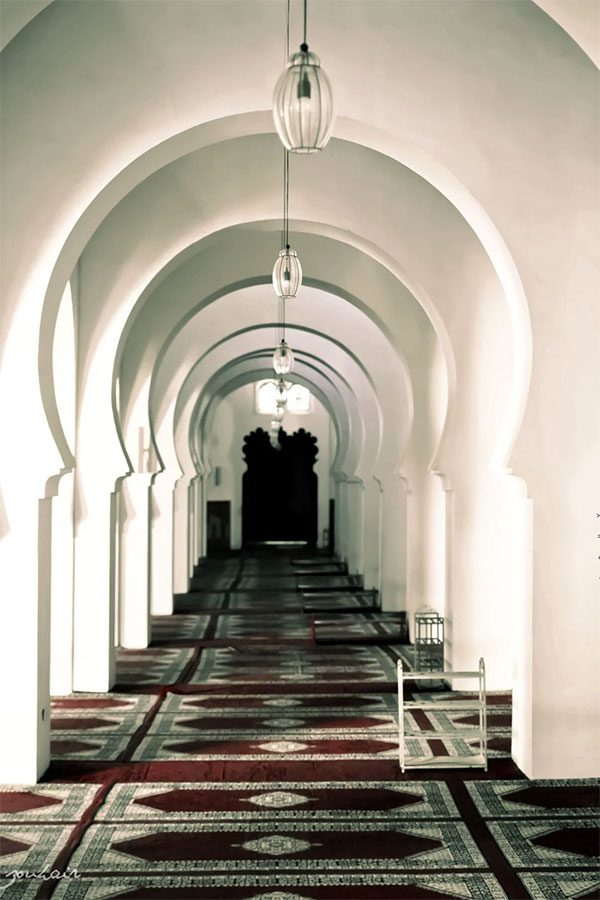
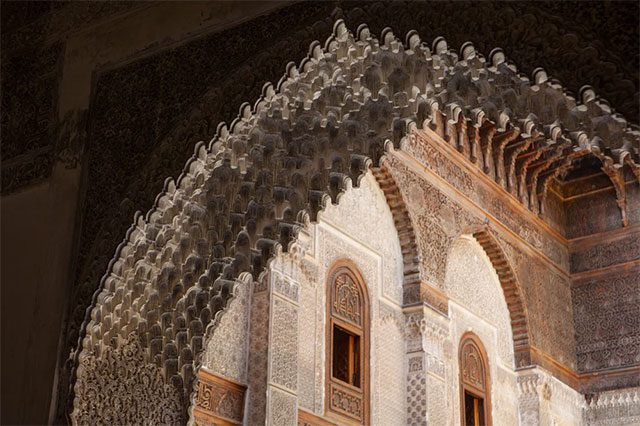
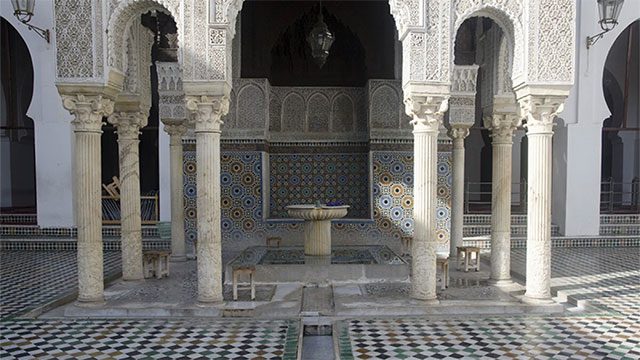
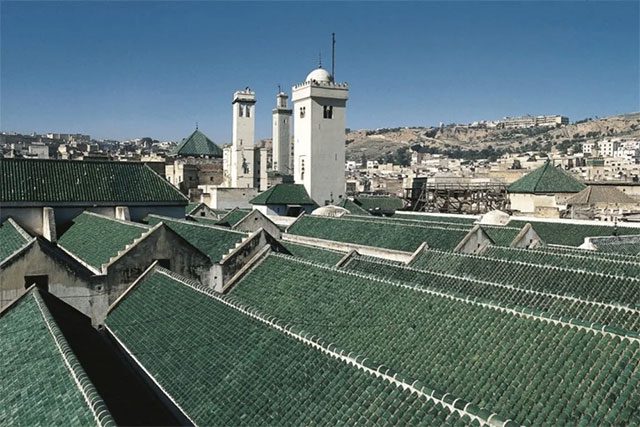
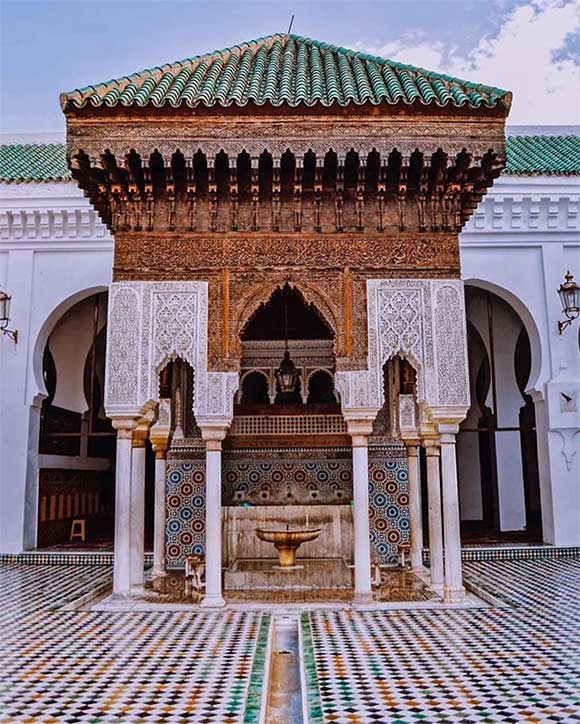
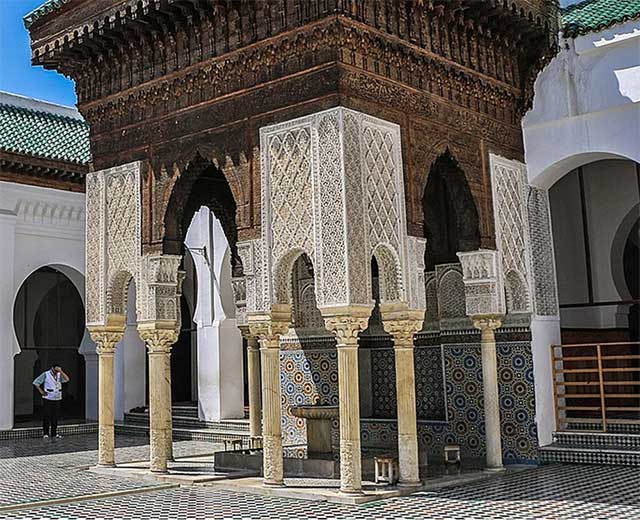
With a history of nearly 1200 years, every corner of Al-Qarawiyyin University is steeped in antiquity.


















































